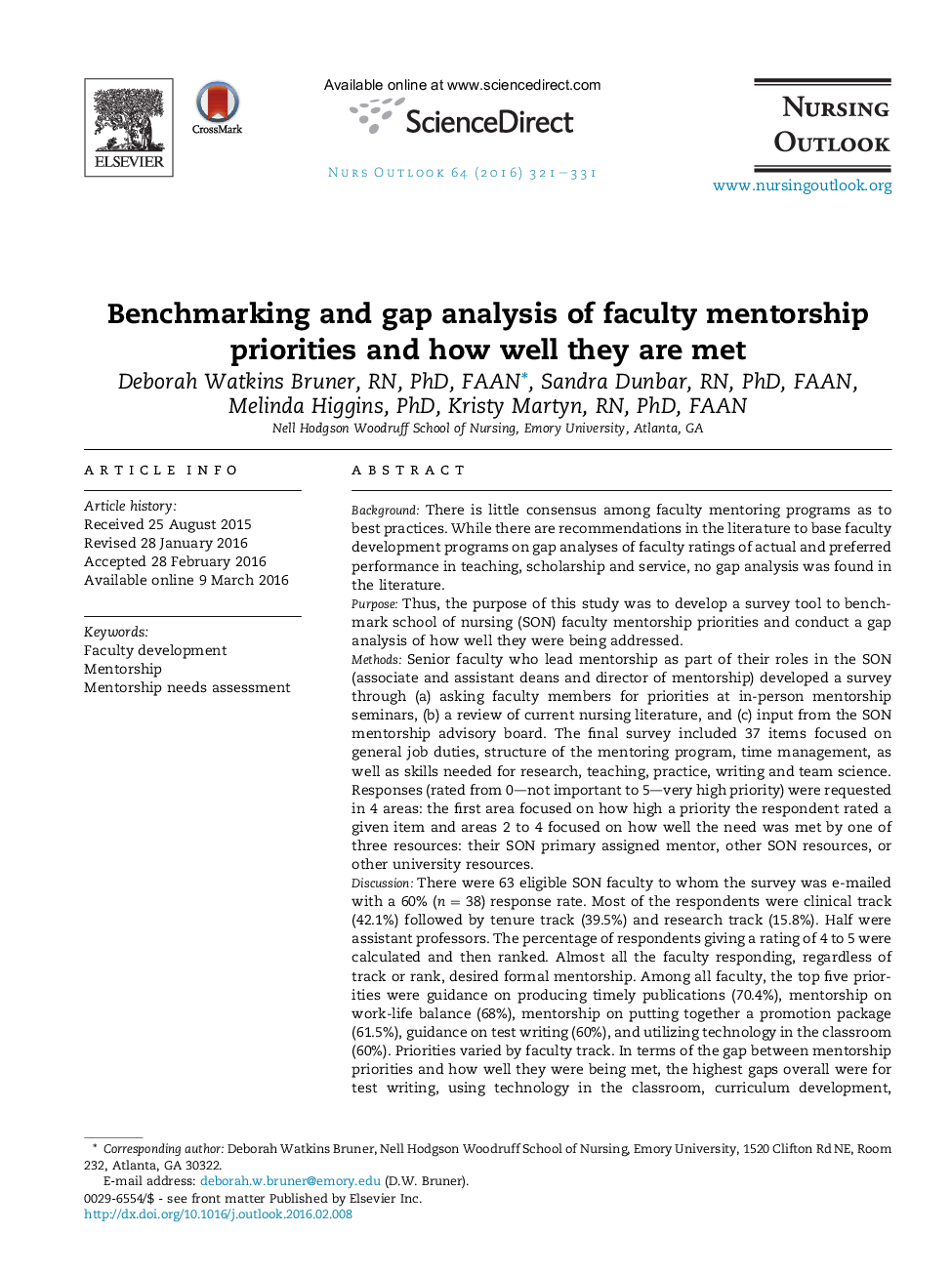| Article ID | Journal | Published Year | Pages | File Type |
|---|---|---|---|---|
| 2678072 | Nursing Outlook | 2016 | 11 Pages |
BackgroundThere is little consensus among faculty mentoring programs as to best practices. While there are recommendations in the literature to base faculty development programs on gap analyses of faculty ratings of actual and preferred performance in teaching, scholarship and service, no gap analysis was found in the literature.PurposeThus, the purpose of this study was to develop a survey tool to benchmark school of nursing (SON) faculty mentorship priorities and conduct a gap analysis of how well they were being addressed.MethodsSenior faculty who lead mentorship as part of their roles in the SON (associate and assistant deans and director of mentorship) developed a survey through (a) asking faculty members for priorities at in-person mentorship seminars, (b) a review of current nursing literature, and (c) input from the SON mentorship advisory board. The final survey included 37 items focused on general job duties, structure of the mentoring program, time management, as well as skills needed for research, teaching, practice, writing and team science. Responses (rated from 0—not important to 5—very high priority) were requested in 4 areas: the first area focused on how high a priority the respondent rated a given item and areas 2 to 4 focused on how well the need was met by one of three resources: their SON primary assigned mentor, other SON resources, or other university resources.DiscussionThere were 63 eligible SON faculty to whom the survey was e-mailed with a 60% (n = 38) response rate. Most of the respondents were clinical track (42.1%) followed by tenure track (39.5%) and research track (15.8%). Half were assistant professors. The percentage of respondents giving a rating of 4 to 5 were calculated and then ranked. Almost all the faculty responding, regardless of track or rank, desired formal mentorship. Among all faculty, the top five priorities were guidance on producing timely publications (70.4%), mentorship on work-life balance (68%), mentorship on putting together a promotion package (61.5%), guidance on test writing (60%), and utilizing technology in the classroom (60%). Priorities varied by faculty track. In terms of the gap between mentorship priorities and how well they were being met, the highest gaps overall were for test writing, using technology in the classroom, curriculum development, lecturing, and developing and managing a research team. As with priorities, the gaps between priorities and how well they were being met varied by track.ConclusionThe priorities and gap analysis were used to guide career development program activities and to develop a plan for future mentor–mentee training and activities. The survey tool demonstrated face validity, variability, and preliminary utility as one method for assessing and guiding improvements in faculty mentorship.
